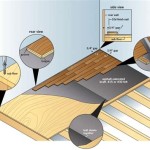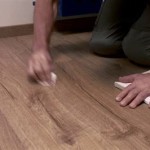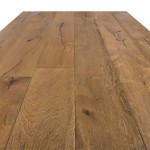Installing Vinyl Flooring Over Cement: Essential Considerations
Installing vinyl flooring over cement is a popular and cost-effective way to update your home's interior. Vinyl flooring is durable, easy to clean, and available in a wide range of styles and colors. However, there are a few essential aspects to consider before beginning the installation process to ensure a successful outcome.
Surface Preparation
Proper surface preparation is crucial for a successful vinyl flooring installation. The cement surface must be smooth, level, and free of any dirt, debris, or moisture. Use a concrete grinder to remove any irregularities or imperfections on the surface. Clean the surface thoroughly with a degreaser and allow it to dry completely before proceeding.
Moisture Control
Moisture can damage vinyl flooring, so it is essential to ensure that the cement surface is dry before installation. Use a moisture meter to test the moisture content of the cement. The ideal moisture content should be less than 4%. If the moisture content is higher, you may need to install a vapor barrier or use a moisture-resistant adhesive.
Underlayment
An underlayment is a layer of material that is placed between the cement surface and the vinyl flooring. It provides added comfort, insulation, and sound absorption. Choose an underlayment that is compatible with vinyl flooring and your specific subfloor conditions.
Adhesive Selection
The adhesive you choose will depend on the type of vinyl flooring you are installing and the condition of the cement surface. Use a high-quality, moisture-resistant adhesive that is specifically designed for vinyl flooring. Follow the manufacturer's instructions carefully when applying the adhesive.
Installation
Start by laying out the vinyl planks or tiles in the desired pattern. Spread the adhesive evenly onto the cement surface using a notched trowel. Place the vinyl planks or tiles into the adhesive and press firmly to ensure a strong bond. Use a rubber mallet to tap the planks or tiles into place and remove any air bubbles.
Finishing Touches
Once the vinyl flooring is installed, you can add finishing touches such as molding or baseboards. Use a caulk gun to fill any gaps or seams between the flooring and the wall. Allow the caulk to dry completely before using the room.
Maintenance
Vinyl flooring is relatively easy to maintain. Regular cleaning with a damp mop and a mild detergent will suffice. Avoid using abrasive cleaners or scrubbing pads, as they can damage the flooring. For spills, wipe them up immediately to prevent stains.

Tips For Installing Vinyl Plank Over Concrete Floors Lemon Thistle

How To Install Vinyl Or Laminate Floors In A Basement Over Concrete Slab

How To Prepare A Concrete Floor For Vinyl Flooring Parrys

Best How To Install Vinyl Plank Flooring Four Generations One Roof

Best How To Install Vinyl Plank Flooring Four Generations One Roof

Lvp Flooring Installation How To Install Luxury Vinyl Plank In A Basement Diy

Tips For Installing Vinyl Plank Over Concrete Floors Lemon Thistle

Best How To Install Vinyl Plank Flooring Four Generations One Roof

Tips For Installing Vinyl Plank Over Concrete Floors Lemon Thistle

How To Install Vinyl Or Laminate Floors In A Basement Over Concrete Slab
Related Posts








